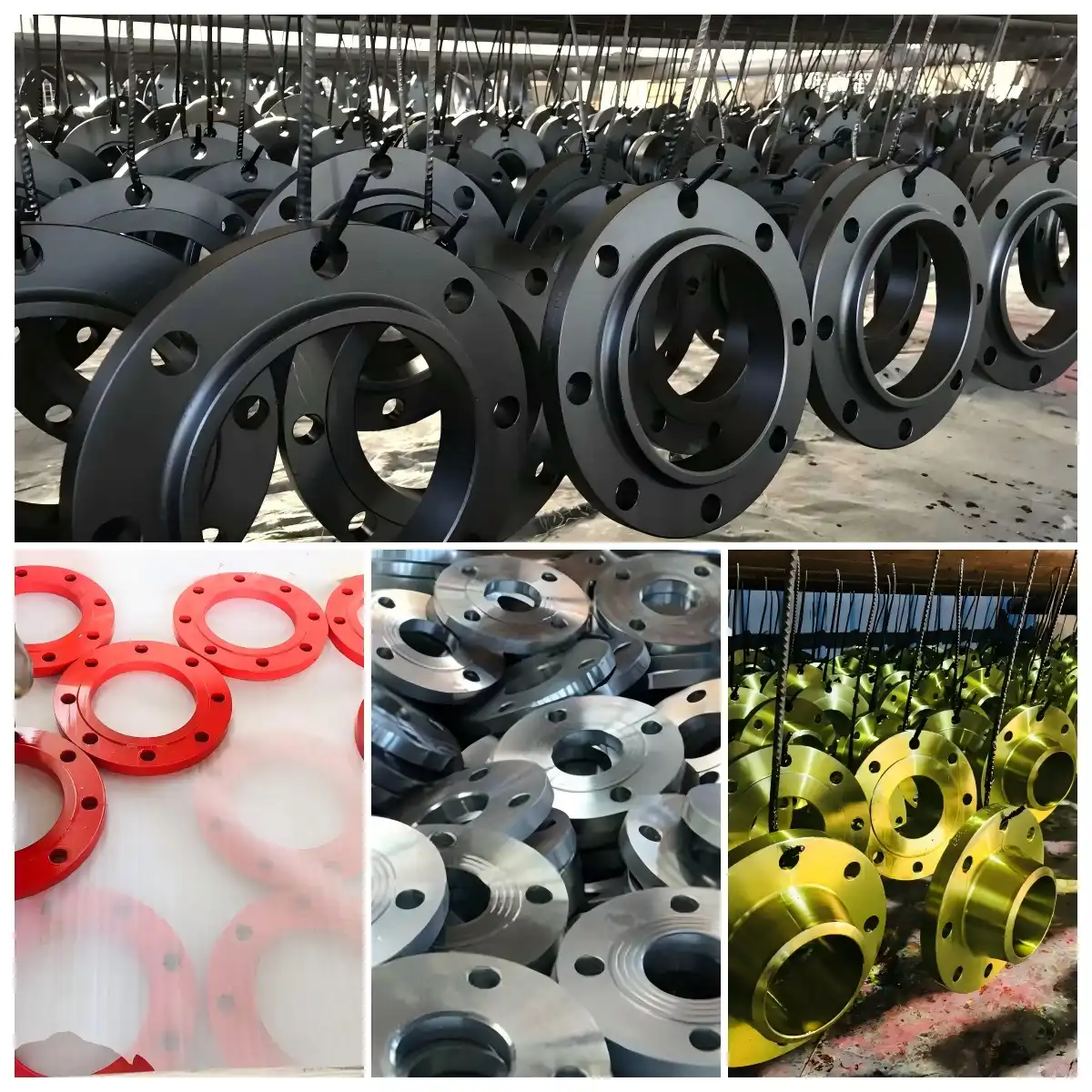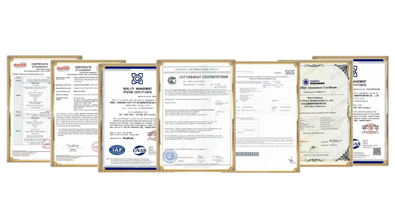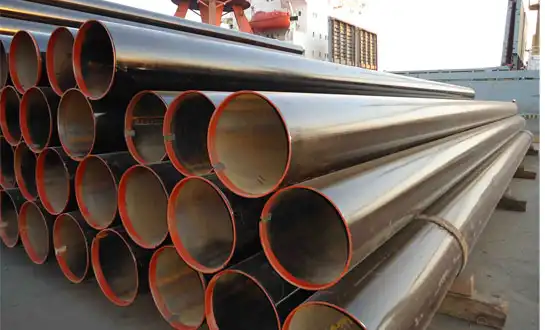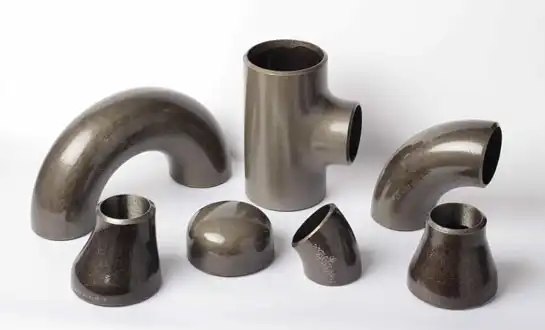The Definitive Guide to ANSI B16.5 Flange Pressure Ratings: Class 150 to Class 2500
Understanding ANSI B16.5 flange pressure ratings is crucial for engineers and procurement professionals working with piping systems across various industries. This comprehensive guide explores the classification system from Class 150 to Class 2500, providing essential insights into pressure-temperature relationships, material specifications, and application requirements. Industrial flanges manufactured according to ANSI B16.5 standards ensure reliable connections in critical infrastructure projects, from petrochemical facilities to power generation plants. The pressure rating system directly correlates with operational safety, system integrity, and long-term performance, making proper selection paramount for successful project outcomes.

Understanding ANSI B16.5 Pressure Class Classifications
Pressure Rating Fundamentals and Temperature Considerations
The ANSI B16.5 standard establishes pressure ratings based on material strength and temperature conditions, with each class representing maximum allowable working pressure at specific temperatures. Industrial flanges rated under this system must withstand designated pressures while maintaining structural integrity throughout their operational lifespan. Class 150 flanges typically handle pressures up to 285 psi at ambient temperatures, while higher classes accommodate increasingly demanding conditions. Temperature derating factors significantly impact these ratings, as elevated temperatures reduce material strength and consequently lower allowable pressures. Understanding these relationships enables engineers to select appropriate flange classes that provide adequate safety margins while avoiding over-specification that increases project costs unnecessarily.
Material Specifications Across Different Pressure Classes
Different pressure classes require specific material compositions to achieve their rated performance characteristics, with carbon steel, stainless steel, and alloy materials serving various applications. Industrial flanges manufactured from ASTM A105 carbon steel commonly serve Class 150 and 300 applications, while higher pressure classes often utilize ASTM A182 stainless steel grades for enhanced strength and corrosion resistance. Material selection directly influences pressure capabilities, with higher-strength alloys enabling increased pressure ratings while maintaining dimensional consistency. Forged construction methods ensure uniform grain structure and eliminate potential weak points that could compromise performance under extreme conditions. Quality control measures including chemical analysis, mechanical testing, and non-destructive examination verify material compliance with ANSI B16.5 requirements.
Dimensional Standards and Bolt Pattern Requirements
ANSI B16.5 specifies precise dimensional requirements for each pressure class, including bolt hole patterns, flange thickness, and hub configurations that ensure proper mating between components. Industrial flanges must maintain these exact dimensions to achieve leak-tight seals and proper load distribution across bolted connections. Higher pressure classes feature increased bolt quantities and larger bolt diameters to accommodate greater clamping forces required for high-pressure applications. Face-to-face dimensions remain standardized across pressure classes for specific pipe sizes, enabling interchangeability within compatible pressure ratings. Raised face, flat face, and RTJ facing options provide sealing solutions for different service conditions while maintaining dimensional compatibility with standard gasket configurations.
Applications and Selection Criteria for Each Pressure Class
Class 150 and 300 Applications in Standard Industrial Services
Lower pressure classes serve the majority of industrial applications where moderate pressures and temperatures prevail, including water distribution, low-pressure steam, and general utility services. Industrial flanges in these classes offer cost-effective solutions for building mechanical systems, HVAC applications, and process industries operating under standard conditions. Class 150 flanges commonly appear in residential and commercial plumbing systems, fire protection networks, and cooling water circuits where pressures rarely exceed 150 psi. Class 300 applications extend to moderate-pressure steam systems, compressed air distribution, and chemical processing equipment operating at elevated pressures up to 740 psi at ambient temperatures. These classes provide excellent value propositions for projects requiring reliable performance without the expense associated with higher-rated components.
Class 600 and 900 Requirements for High-Pressure Systems
Medium-high pressure applications demand Class 600 and 900 flanges to safely contain pressures ranging from 1440 to 2220 psi under standard temperature conditions. Industrial flanges in these categories serve critical roles in power generation facilities, high-pressure steam systems, and petrochemical processing equipment where safety margins cannot be compromised. Class 600 flanges commonly appear in boiler feedwater systems, high-pressure steam headers, and process equipment handling aggressive chemicals under elevated pressures. Hydrocarbon processing facilities frequently specify Class 900 flanges for reactor systems, fractionating columns, and high-pressure gas handling equipment. These applications require enhanced material properties, precision manufacturing, and rigorous quality control measures to ensure reliable performance throughout extended service periods.
Class 1500 and 2500 Specifications for Extreme Service Conditions
The highest pressure classes accommodate extreme service conditions encountered in specialized industrial applications where standard ratings prove inadequate. Industrial flanges rated Class 1500 and 2500 serve critical roles in high-pressure injection systems, supercritical fluid processing, and specialized manufacturing processes requiring pressures exceeding 3000 psi. Class 1500 applications include high-pressure pump connections, reactor vessel nozzles, and specialized processing equipment in pharmaceutical and chemical industries. Class 2500 flanges represent the pinnacle of ANSI B16.5 pressure capability, serving applications such as high-pressure gas transmission, specialized injection molding equipment, and research facility installations. These extreme-duty components require premium materials, specialized manufacturing techniques, and comprehensive testing protocols to ensure safe operation under demanding conditions.
Installation and Maintenance Best Practices
Proper Assembly Techniques and Torque Requirements
Correct installation procedures are essential for achieving rated performance from ANSI B16.5 flanges, with specific torque values and assembly sequences ensuring optimal gasket compression and load distribution. Industrial flanges require uniform bolt loading to prevent gasket extrusion, leakage, and premature failure under operating conditions. Bolt torque specifications vary according to pressure class, bolt material, and flange size, with higher pressure classes demanding increased clamping forces to maintain seal integrity. Cross-pattern tightening sequences ensure even stress distribution across flange faces, preventing warpage and gasket damage during assembly. Proper gasket selection and installation techniques complement correct bolting procedures to achieve leak-tight connections that maintain their integrity throughout the system's operational life.
Inspection and Quality Assurance Protocols
Regular inspection and maintenance programs maximize the service life of ANSI B16.5 flanges while ensuring continued safe operation under design conditions. Industrial flanges should undergo periodic visual examinations to identify signs of corrosion, erosion, or mechanical damage that could compromise their pressure-containing capability. Non-destructive testing methods including magnetic particle inspection, liquid penetrant testing, and ultrasonic examination detect subsurface defects that may not be visible during routine inspections. Dimensional verification ensures flanges maintain their original geometry and bolt hole alignment throughout their service life. Documentation of inspection results, maintenance activities, and any repairs performed provides valuable historical data for reliability analysis and replacement planning.
Long-term Performance and Replacement Planning
Strategic maintenance planning optimizes the total cost of ownership for ANSI B16.5 flange installations while minimizing unplanned downtime and safety risks. Industrial flanges should be evaluated based on their remaining useful life, considering factors such as corrosion rates, cyclic loading, and changes in operating conditions. Predictive maintenance techniques enable early identification of potential failure modes, allowing for planned replacement during scheduled maintenance windows rather than emergency repairs. Material upgrades may be beneficial when replacing flanges in severe service applications, with higher-alloy materials providing extended service life and improved corrosion resistance. Proper inventory management ensures critical spare parts remain available for emergency repairs while avoiding excessive carrying costs for slow-moving items.
Conclusion
ANSI B16.5 flange pressure ratings provide a standardized framework for selecting appropriate components across diverse industrial applications. Understanding the relationship between pressure classes, material specifications, and application requirements enables engineers to make informed decisions that balance performance, safety, and cost considerations. Proper installation, maintenance, and inspection practices ensure these critical components deliver reliable service throughout their intended operational life while maintaining system integrity and safety standards.
HEBEI RAYOUNG PIPELINE: Premier Industrial Flanges Manufacturers
At HEBEI RAYOUNG PIPELINE TECHNOLOGY CO., LTD., we excel in manufacturing high-quality industrial flanges that meet and exceed ANSI B16.5 standards across all pressure classes. Our comprehensive product range includes buttweld steel elbows, reducers, and flanges engineered for secure, reliable connections in demanding applications. With ISO 9001:2015 certification and GOST-R compliance, we guarantee consistent quality and export readiness for global markets. Our experienced engineering team understands the critical importance of precision manufacturing and rigorous quality control in producing industrial flanges that perform reliably under extreme conditions. Whether you require Class 150 components for standard applications or Class 2500 flanges for specialized high-pressure systems, RAYOUNG delivers solutions that ensure project success and operational safety. Contact our technical team today at info@hb-steel.com to discuss your specific requirements and discover how our expertise can enhance your next project.
References
1. American Society of Mechanical Engineers. ASME B16.5-2020: Pipe Flanges and Flanged Fittings: NPS 1/2 through NPS 24 Metric/Inch Standard. New York: ASME Press, 2020.
2. Harvey, John F. Theory and Design of Pressure Vessels. 2nd ed. New York: Van Nostrand Reinhold Company, 1985.
3. Kannappan, Sam. Introduction to Pipe Stress Analysis. New York: John Wiley & Sons, 1986.
4. Megyesy, Eugene F. Pressure Vessel Handbook. 14th ed. Tulsa: Pressure Vessel Publishing, 2008.
5. Singh, Karan P. and Soler, Abel I. Mechanical Design of Heat Exchangers and Pressure Vessel Components. Berlin: Springer-Verlag, 1984.
6. Jawad, Maan H. and Farr, James R. Structural Analysis and Design of Process Equipment. 3rd ed. Hoboken: John Wiley & Sons, 2019.

Need a quote? Want to see samples? Just say hello. We’re friendly. We’re fast. And we’re ready when you are.

Welcome to RAYOUNG – Strong Pipes, Stronger Promise




